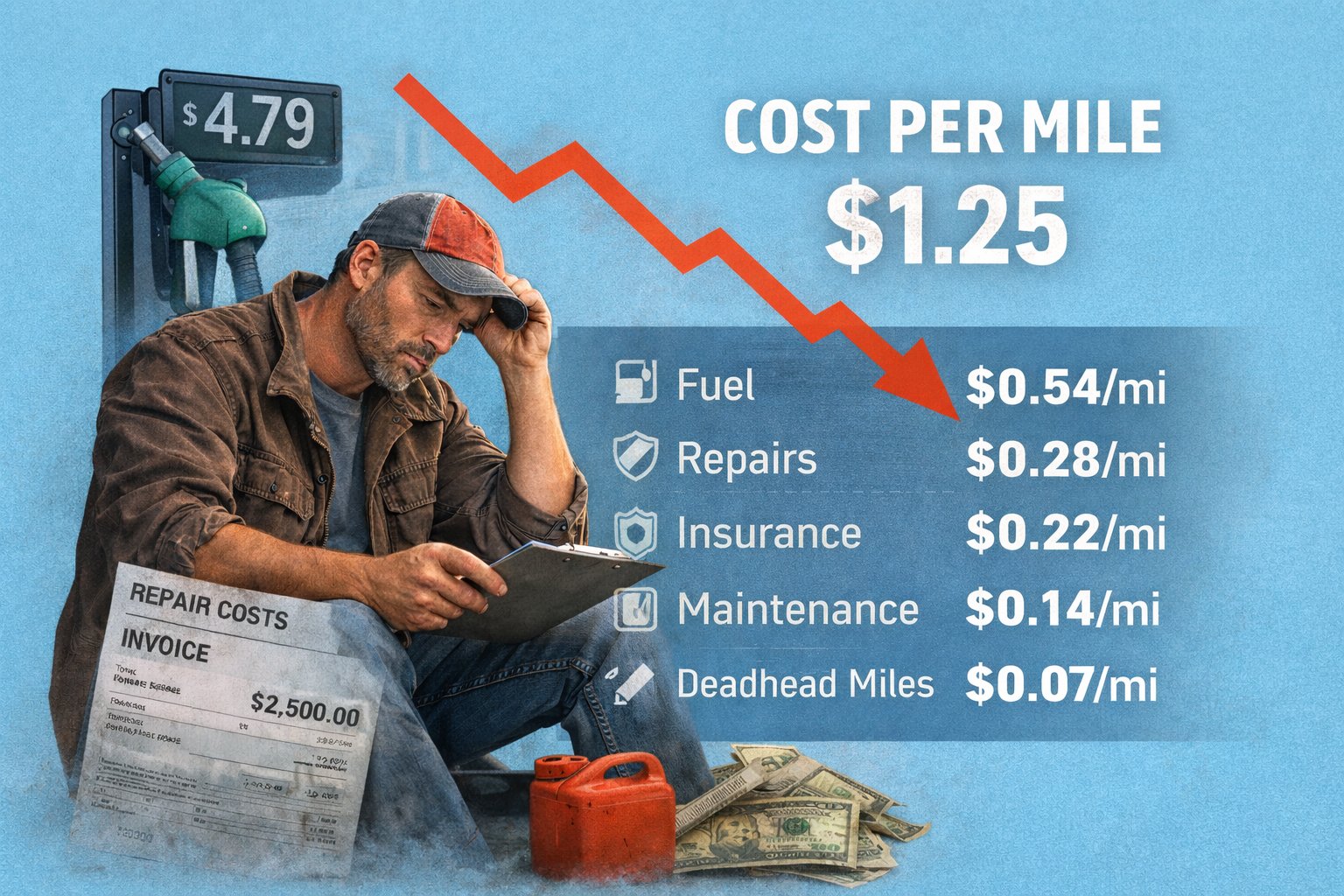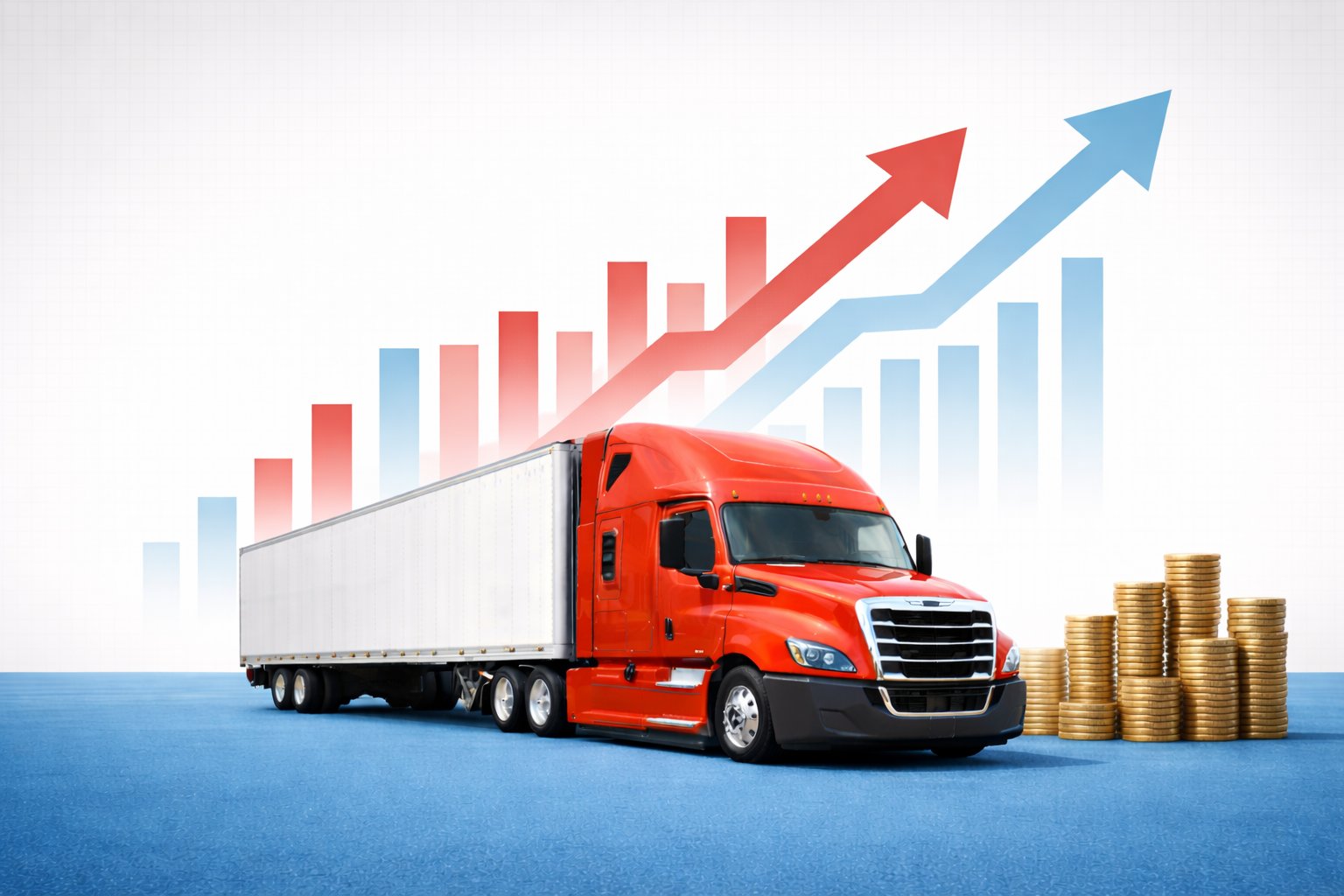
Let’s face it — few things are more tempting to an owner-operator than seeing a high-paying load pop up on the board. Your eyes light up. You think, “$3,200 for a single run? That’s my next paycheck.” And just like that, you’re hooked. You hit the accept button, map your route, and start rolling.
But hold up. Before you chase that shiny payout, ask yourself one critical question:
What’s your cost per mile (CPM)?
If you don’t know the answer — or haven’t calculated it in a while — that “high-paying” load might actually be draining your profits faster than you realize.
The Illusion of the High-Paying Load
Here’s a truth most seasoned drivers learn the hard way: Not every big number means big money.
Sure, $3,200 sounds great. But if it’s going to cost you $3,000 to haul that load — once you factor in fuel, tolls, maintenance, insurance, food, lodging, and time — you’ve just worked for peanuts.
Or worse, at a loss.
Many owner-operators fall into the trap of chasing rates per load or per trip without understanding how much it’s truly costing them to move their truck from point A to point B. And when you don’t know your CPM, you’re not really running a business — you’re just driving and hoping the math works out.
Spoiler: it usually doesn’t.
Why Knowing Your CPM is Everything
Your cost per mile (CPM) is the baseline number that tells you how much it costs you to operate your truck for every mile driven. It includes both fixed costs (insurance, truck payment, permits) and variable costs (fuel, maintenance, tires, tolls, etc.).
Let’s say your CPM is $1.65. That means for every mile you run, you need to be earning at least $1.65 just to break even.
Now, imagine you take on a “high-paying” 800-mile load that pays $2,400. That’s $3.00 per mile — sounds good, right?
But what if you have to deadhead 300 miles to pick it up, and the drop-off point is in a freight desert where your next load will require another long deadhead? And let’s not forget tolls, $5.50 diesel, and maybe a motel night if the delivery spans multiple days.
When you add it all up, your actual cost might spike to $2.80/mile. Suddenly that great-paying load only netted you $160. And you just worked two days for it.
The Cost of Not Knowing
Not knowing your CPM is like running a race blindfolded. Sure, you might make it to the finish line — but not without some bruises, wrong turns, and a good chance of crashing into a wall.
Here’s what happens when you focus on load pay and ignore your CPM:
- You accept low-margin loads thinking they’re profitable.
- You waste time and fuel on deadhead miles, thinking they’re part of the deal.
- You fail to build a consistent profit margin, so when maintenance or unexpected costs hit, you’re scrambling.
- You burn yourself out chasing big numbers that never really pay off.
Running your business this way is like trying to build a house without knowing the cost of bricks. The walls might go up, but the foundation’s shaky — and that’s a dangerous way to operate in an industry with thin margins and high volatility.
Make CPM Your Business Compass
Every successful business has a compass. For owner-operators, your cost per mile is that compass.
Here’s how to use it:
- Calculate your CPM monthly: fixed costs stay relatively stable, but fuel, maintenance, and other expenses can shift fast. Recalculate monthly to stay on top of changes.
- Use CPM to evaluate loads: Before you book any load, break it down by the total number of miles — including deadhead — and compare the rate per mile against your CPM. If it’s below your break-even point, walk away.
- Plan smarter, not harder: Knowing your CPM allows you to build routes and schedules that actually make money — not just look good on paper.
- Watch out for load boards: Load boards can be a great resource, but they also throw a lot of high-paying distractions your way. Don’t let dollar signs blind you. Make sure the math checks out after expenses.
- Build relationships with brokers and shippers: When you know your numbers, you can negotiate with confidence. You’re not just another truck — you’re a business with a bottom line.
Think Like a Business Owner, Not Just a Driver
There’s a reason it’s called being an owner-operator. You’re not just driving — you’re running a business. And businesses live and die by the numbers.
You wouldn’t walk into a store, buy products to resell, and not know what you paid for them, right? So why would you haul freight without knowing your costs?
In a Wrap: The Numbers Don’t Lie
It’s easy to get excited when you see a load that promises a fat payout. But smart operators know that profit isn’t in the load price — it’s in the margin.
So, next time a $3,000 load flashes across your screen, don’t rush in. Ask yourself:
- How far do I have to go to pick it up?
- What’s the total mileage, including deadhead?
- What are fuel prices looking like?
- Will I be stuck in a bad market afterward?
- And most importantly — what’s my cost per mile?
That number should be your North Star, guiding every decision you make behind the wheel. Focus less on what a load pays — and more on what it earns after costs.
Because out here, it’s not about chasing big numbers.
It’s about keeping more of what you earn.






